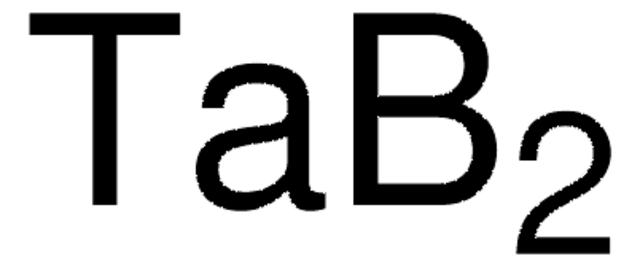774049
Zirconium(IV) oxide-yttria stabilized
sputtering target, diam. × thickness 2.00 in. × 0.25 in., 99.9% trace metals basis
Synonym(s):
8YSZ, YSZ8, YSZ, Yttria stabilized zirconia, Yttrium stabilized zirconium oxide
About This Item
Recommended Products
assay
99.9% trace metals basis
form
solid
contains
8 mol % yttria as stabilizer
composition
(ZrO2)0.92(Y2O3)0.08
reaction suitability
core: zirconium
diam. × thickness
2.00 in. × 0.25 in.
mp
>2,600 °C (lit.)
SMILES string
O=[Zr]=O.O=[Y]O[Y]=O
InChI
1S/5O.2Y.Zr
InChI key
KSTOPEBVPBSOTK-UHFFFAOYSA-N
Looking for similar products? Visit Product Comparison Guide
Application
signalword
Warning
hcodes
Hazard Classifications
Eye Irrit. 2 - Skin Irrit. 2 - STOT SE 3
target_organs
Respiratory system
Storage Class
13 - Non Combustible Solids
wgk_germany
WGK 3
flash_point_f
Not applicable
flash_point_c
Not applicable
Choose from one of the most recent versions:
Certificates of Analysis (COA)
Don't see the Right Version?
If you require a particular version, you can look up a specific certificate by the Lot or Batch number.
Already Own This Product?
Find documentation for the products that you have recently purchased in the Document Library.
Articles
Learn about the different low temperature direct alcohol fuel cells based on nanostructured material catalysts and anion exchange membrane fuel cells.
This article describes the use and advantages of polyoxometalate-based redox-flow batteries as electrochemical energy storage systems over Li-ion batteries.
Thin film solid oxide fuel cells offer technical advantages; review of TF-SOFC deposition methods for electrolyte thin films.
Nanocomposite Coatings with Tunable Properties Prepared by Atomic Layer Deposition
Our team of scientists has experience in all areas of research including Life Science, Material Science, Chemical Synthesis, Chromatography, Analytical and many others.
Contact Technical Service






